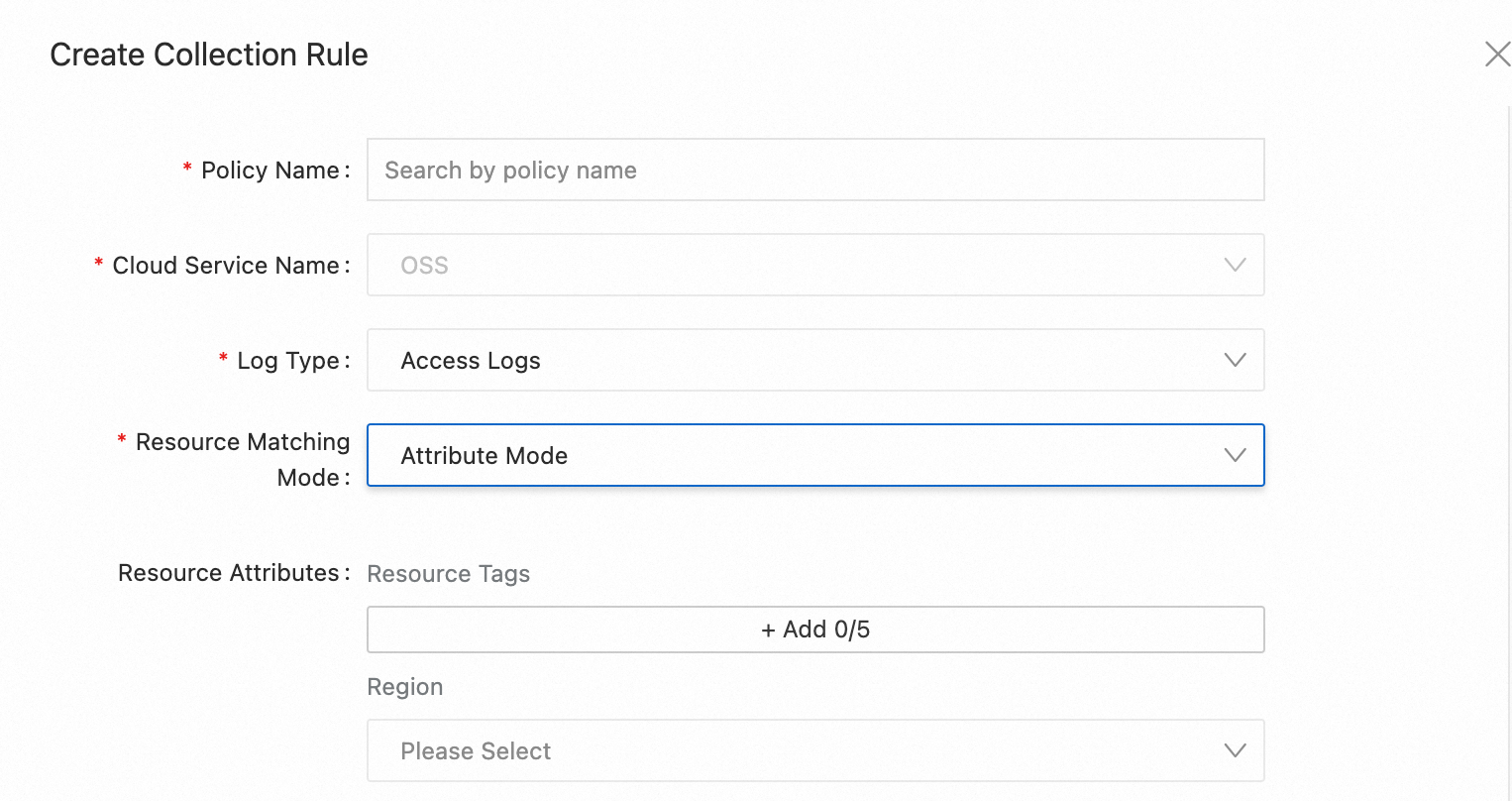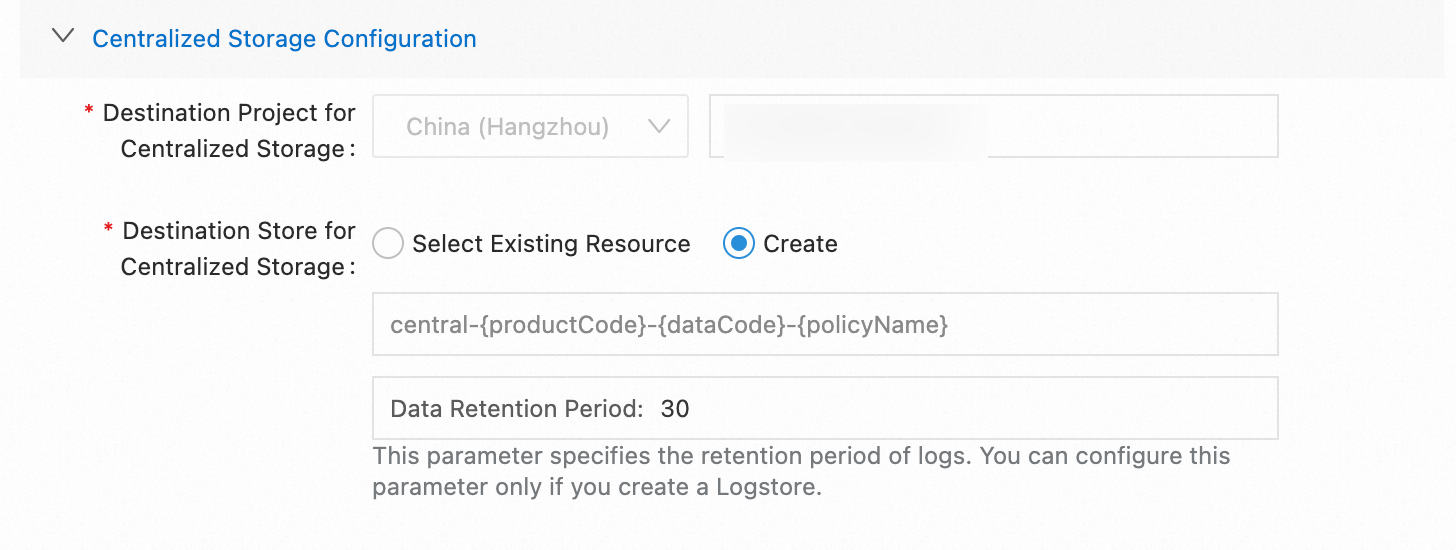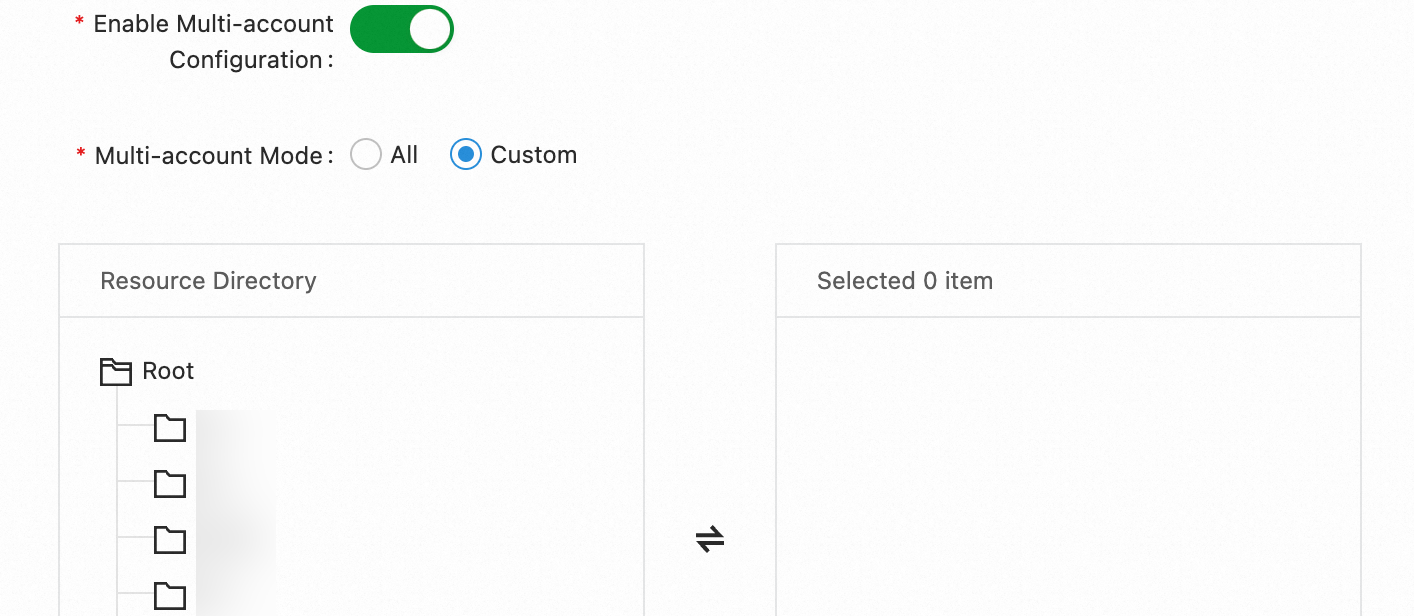Error code | Error message | Description |
NotMatch | productCode or dataCode are not match to current productCode or dataCode | When you modify a collection rule, you are not allowed to modify the Cloud Service Name or Log Type parameter in the rule. Otherwise, a mismatch error occurs. |
PolicyNotExist | the collection policy does not exist | The collection rule that is requested for a query or delete operation does not exist. |
InvalidSLR | SLR not exist or created failed | The service-linked role does not exist or fails to be created. When you create a collection rule in the new version of Log Audit Service, the system automatically creates a service-linked role named AliyunServiceRoleForSLSAudit in the current Alibaba Cloud account and the members of the resource directory that is created. For more information, see Manage the AliyunServiceRoleForSLSAudit service-linked role. |
InvalidRAM | RAM is not enough for execute this action, please check current account ram policy of this operation | The Resource Access Management (RAM) user does not have the permissions to manage the new version of Log Audit Service. For more information, see Grant a RAM user the permissions to use the new version of Log Audit Service. |
InvalidProductData | Invalid Product Code or Data Code | The Cloud Service Name or Log Type parameter is invalid. |
InvalidProductData | Invalid Policy Name | The Policy Name parameter is invalid. |
InvalidPolicyConfig | Policy Config : resourceMode should be all/instanceMode/attributeMode | You must set the Resource Matching Mode parameter to All Resources, Instance Mode, or Attribute Mode. |
InvalidPolicyConfig | Policy Config : resourceMode should be all for lens global log type | For global logs, you must set the Resource Matching Mode parameter to All Resources. |
InvalidPolicyConfig | Policy Config : resourceMode should be attribute mode for security log type | For security logs, you must set the Resource Matching Mode parameter to Attribute Mode. |
InvalidPolicyConfig | Policy Config : you should set at least one center region for security log type | For security logs, you must specify at least one region as the region attribute. |
InvalidPolicyConfig | Policy Config : this productCode and dataCode not allowed to config instance ids | For security logs, you cannot configure the Instances parameter. |
InvalidConfig | Please check if the project/logstore belongs to you or the project/logstore in right region | The destination project or Logstore for centralized storage does not belong to the current account or the specified region is not the region where the current Logstore resides. |
InvalidConfig | policyCode and dataCode is required when you need to list policy by instanceId that meet the filter conditions | If you want to query collection rules by instance ID, you must configure the Cloud Service Name and Log Type parameters. |
InvalidCentralizeConfig | when centralizeEnabled, you should set at least one centralize config | You must configure the Destination Store for Centralized Storage parameter after you enable centralized storage configuration. |
InvalidCentralizeConfig | centralize config is necessary for security product log collection | For security logs, you must enable centralized storage configuration. |
InvalidCentralizeConfig | dest project, dest logstore, dest region, dest ttl should not be empty when centralize enabled | You must configure the Destination Project for Centralized Storage, Destination Store for Centralized Storage, and Data Retention Period parameters after you enable centralized storage configuration. |
InvalidCentralizeConfig | dest project invalid for centralize config | The Destination Project for Centralized Storage parameter is invalid. |
InvalidCentralizeConfig | dest logstore invalid for centralize config | The Destination Store for Centralized Storage parameter is invalid. |
InvalidCentralizeConfig | dest region invalid for centralize config | The region where the destination project for centralized storage resides is invalid. |
InvalidResourceDirectoryConfig | Policy ResourceDirectory Config : when you set resource directory, you should set account group type first | When you configure a resource directory, you must configure the Multi-account Mode parameter. |
InvalidResourceDirectoryConfig | Policy ResourceDirectory Config: instance mode not allowed to set resource directory | If the multi-account mode is enabled, the Resource Matching Mode parameter cannot be set to Instance Mode. |
InvalidResourceDirectoryConfig | Policy ResourceDirectory Config : members should not be empty | If you set the Multi-account Mode parameter to Custom, you must specify members. |
InvalidResourceDirectoryConfig | Policy ResourceDirectory Config : centralize config enabled is required for resource directory | You must enable centralized storage when you create a resource directory because resource directories are specific to the new version of Log Audit Service. |
InvalidResourceDirectoryConfig | Policy ResourceDirectory Config : the account resource directory not in use | No resource directory is enabled in the current account. |
InvalidResourceDirectoryConfig | Policy ResourceDirectory Config : the account is neither a delegated admin nor a master, just a member account | The current account is not a management account or a delegated administrator account, but a member of the resource directory. A member cannot configure the multi-account mode in a collection rule. |
InvalidResourceDirectoryConfig | Policy ResourceDirectory Config : custom members include invalid account | After you set the Multi-account Mode parameter to Custom, invalid members are specified. |
InvalidDataConfig | Policy DataConfig: the data region is not valid | For global logs, the Global Log Storage Region parameter is invalid. |
InvalidDataConfig | Policy DataConfig: this kind of product is not allowed to set data config | You cannot configure the settings for non-global logs. |
InvalidDataConfig | Policy DataConfig: the data region already exist in other policy, you cannot change | For global logs, if you configure the Global Log Storage Region parameter, you cannot modify the parameter. |
 Elastic Compute Service (ECS)
Elastic Compute Service (ECS)
 Lingma
Lingma
































